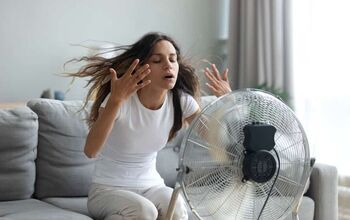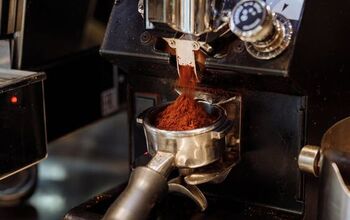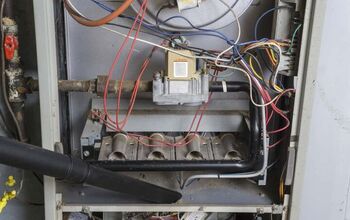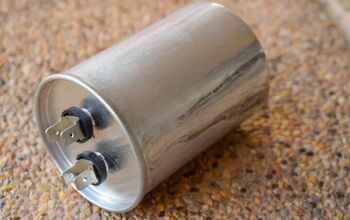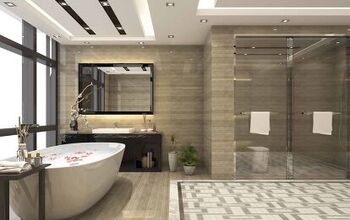Why Is My Floor So Slippery? (And How To Fix It)

Slippery floors are an all-too-common hazard in homes without carpeting. Whether it’s a gleaming wood floor, sparkling tile, or even nondescript linoleum, a slippery floor is a dangerous and often unsuspected problem. If you find yourself sliding or falling due to slippery floors in your home, you need to address and fix this issue right away.
Slippery floors are often caused by moisture, dirt, or residue from cleaning products. It can occur when the floor has the wrong kind of wax or finish. To get rid of slippery floors, ensure they are always dry, and use the correct cleaning products. Rinse and dry mop after cleaning the floors, and clean them frequently. Try using an anti-slip spray, or add a non-slip coat to the existing finish.
Slippery floors are a dangerous home problem for several reasons. For one, slipping on the ground can cause serious injuries, especially in the elderly. Furthermore, a slippery floor can be difficult to detect, so slipping can be inevitable unless you are familiar with the floor. If you have slippery floors in your house, you must understand the root cause of the problem, and learn the various effective ways to eliminate it.
Five Potential Reasons Why Your Floor Is Slippery
1. You Are Using The Wrong Cleaning Products
If your slippery floor problem seems to have developed out of nowhere, then your cleaning products may be to blame. Some cleaning products claim to be universal, but when it comes to cleaning floors, there are specific products you should and should not use.
If your floors recently became noticeably slipperier, check your floor cleaner. Confirm you are using the right type, and make sure you are diluting it properly. There is a good chance you are using the wrong product or a concentrated version.
2. The Climate And Home Is Wet And Humid
Another cause of slippery floors is moisture. This is particularly true on slick surfaces like sealed wood, marble, and non-textured tile. If you live in a humid climate, moisture may collect on your floors. Marble floors and even tile tend to be cooler than the rest of your home. This will cause condensation on the floor and may make your floors slippery.
3. You Aren’t Washing Away The Cleaning Solution
Another reason your floors may be slippery is you are leaving too much mop water residue on the floors when you clean them. This mop water contains a cleaning solution, which once dry, may become quite slippery. A cleaning solution is essentially soap, so imagine a thin layer of soap on your floors. It doesn’t get much slipperier than that.
4. The Floor Finish Is Not Right For Your Home
If your floors have always been very slippery, then there is a chance that the wrong type of floor finish or wax was used on your floors. The designer or home builder may have wanted the floors to shine like a diamond, and in turn, created floors that are shiny, but also slippery and unsafe.
5. You Aren’t Cleaning The Floors Frequently Enough
Lastly, floors can become quite slippery when they are neglected and not cleaned. Dust, dirt, and spills can all create a slippery floor. If you rarely mop and don’t sweep or vacuum very often, then there is a good chance your slippery floors are a product of infrequent cleaning.
10 Ways To Fix (And Prevent) Slippery Floors
1. Sweep And Vacuum More Frequently
Since slippery floors are often caused by dirt and dust, cleaning them more frequently is a great way to reduce the risk of slipping. When you sweep more frequently, there is less dust and dirt on the ground. Not only will it make your floors safer, but it will make your home look cleaner, too.
2. Incorporate Non-Slip Runners And Rugs
If your floors have always been slippery and you can’t seem to change this, then it might be time to cover them. Use non-slip floor runners in your hallway, and add rugs in a larger room. Ensure these rugs won’t slide on your floor using various methods. Floor runners and rugs are a great way to add style to a room while also making your home safer.
3. Try Non-Slip Sprays
One quick fix to a slippery floor is to try a non-slip spray. There are several types on the market. Make sure you use a spray designed for floors and your specific flooring material. Keep in mind this is a quick solution, and it is not necessarily a permanent one.
4. Add Anti-Slip Material To Stairs
If the floors on your stairs are slippery, you should do all you can to immediately fix this problem. Slippery stairs can cause dangerous falls and serious injury. Find anti-slip material, whether it is a non-slip tape or non-slip material specifically designed for stairs. It may not look glamorous, but it is important to put safety over style, at least until you can find a more permanent solution.
5. Keep Your Floors Dry
Moisture is another root cause of slippery floors. Therefore, you must do all you can to keep your floors dry. Clean up spills immediately, and mop up any puddles when you notice them. If you have frequent condensation on your floors due to humidity, take action by using a dehumidifier to lower the humidity in your home.
6. Use The Correct Cleaning Products
Another way to get rid of slippery floors in your home is to switch to a different type of cleaning product. If the cause of your slippery floors has to do with the residue your cleaning solution leaves behind, then try a different one.
Opt for a cleaning product specifically designed for your type of floor. You should also look for products that are known to leave no trace and read reviews to ensure there are no complaints about slippery floors after using the product.
7. Paint On An Anti-Slip Coating Over Existing Floors
If you want a permanent solution to your slippery floor problem, consider adding a non-slip layer to your existing floors. There are various non-slip and “gripping” solutions you can add to your floors to make them safer. Just make sure you use a solution that is meant for your specific floor material. Using the wrong type can cause damage and further floor issues.
8. Install More Railings As Needed
If you have elderly relatives living in your home or have a specific hallway or stairwell that is slippery, you should add more railings. Sometimes all you need is something to hold onto to avoid slipping. This is another permanent solution that works well in areas that are particularly susceptible to slips and falls.
9. Use A Degreasing Agent On The Floors
If your slippery floor is caused by grease, grime, or some other buildup, then you might want to try using a degreasing agent. This type of problem is common on kitchen floors and finished garages. Normal cleaning products aren’t always effective at removing this slippery tough grease buildup.
10. Rinse And Dry-Mop Floors After Cleaning
Lastly, if you want to get rid of your slippery floors, make sure you don’t skip the dry-mopping step when you clean your floors. Rinse your floors with water, and then use a dry mop. This will ensure your floors are dry and no cleaning product residue remains. It will also make your floors shine bright.
Summing Up Slippery Floors And How To Fix Them
Shimmering floors can make your home look regal, but they can also spell danger in the form of slips and falls. Slippery floors are a home hazard that should be addressed right away. They are often caused by infrequent cleaning, incorrect cleaning products, or too much wax or finish.
To get rid of your slippery floors, you should increase how frequently you sweep, and make sure you mop with the correct cleaning products. Add railings, rugs, and floor runners in particularly slippery locations, and always keep your floors dry.
Related Guides:

Tom Gaffey is an expert writer who currently resides in Washington D.C. Tom has a passion for real estate and home improvement writing, as well as travel and lifestyle writing. He lived the last twelve years in Hawaii where he worked closely with luxury resorts and event planners, mastering his knowledge of aesthetics and luxury products. This is where he found his passion for home improvement and a keen interest in DIY projects. Currently, Tom resides in Washington D.C, and also working on his debut fiction novel.
More by Tom Gaffey










